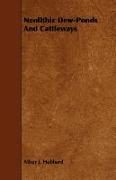Neolithic Dew-Ponds and Cattleways
BücherAngebote / Angebote:
PREFACE TO THE SECOND EDITION FEW things can be more interesting to the traveller than to survey, from some elevated spot, the road by which he has journeyed, and to observe its course as it winds away in the distance and is lost on the horizon. It is an interest of a similar character, only immeasurably greater in degree, which we experience in looking back to the horizon of time and examining the works that remain to us of the earliest civilisation in our land. The road behind us is dim, and the traces which our far-away fathers have left upon the hills and plains of England are so multitudinous, and yet so little understood, that it is necessary to make use of certain definitions and limitations of the subject, if we are to arrive at any conclusions which shall be at once accurate and intelligible. First, let us say that for the purposes of this work we use the word neolithic as a general term, applicable not only to stones bearing the imprint of a certain style of workmanship, but to all the works done by the earliest men of whose lives we can find traces, and also to the workers themselves. Palzolithic man is below the horizon to the Second Edition The human interest of this wider aspect of the subject ftlr transcends the attractiolls of flints and sherds in a museum. It is true that the chipped or polished surface of the stones, and the outlines of the pottery, not only show manual dexterity, but bear witness to the nature of the life which was led by the workers. This evidence is, however, only subsidiary to the greater testinlony of plain and hill. Next, although the traces of the work done by neolithic nlan are probably to be found over the greater part of the world, we shall limit ourselves to our own doorstep, where the interest is most immediate. Even when thus restricted geographically, we find that we are gazing into a profundity of time which is scarcely to be measured in centuries. When we consider that to follow the will-o-the-wisp which we call progress, is of the essence of mans contract with things in general, we perceive that it would be un- reasonable to regard this vast period as one, or to assume that considerations applicable to one of its epochs will be applicable to all. Again we must limit ourselves. Two stages only can be defined. Of these the earlier may be called the Hill-period, and the later the Plain-period. The demarcation is fairly distinct, in spite of the fact that the diverse renlaitls of the two periods frequently occur in the same neighbourhood. The men of the earlier period were earthworkers, those of the later period, stoneworkers. The former to the Second Edition were concerned only with the primitive necessities of life, and their settlements, built of earth, are of the earth, earthy, and the purpose of every part of them is purely utilitarian. The latter, as at Avebury and Stonehenge, built vast sun-temples in the open country, and showed great mechanicnl skill in moving and setting up the ponderous rocks which now form their monments. It is quite otherwise in the Hill-period-that earlier time to which the present work will be limited. On the downs we find that the dominating idea of the hillmen was terror of the plains, which had becorne habitable in the later period. But, before we may pursue the subject further, we must justify ourselves in daring to describe, even in general terms, a life so far removed from our own. It is necessary to bear in mind that we are dealing with works which were executed on the downland, and that there, when once the chalk has been scored, or an embankment built, the seal that has been set is imperishable, unless man himself again comes to destroy his own handiwork...
Folgt in ca. 15 Arbeitstagen




